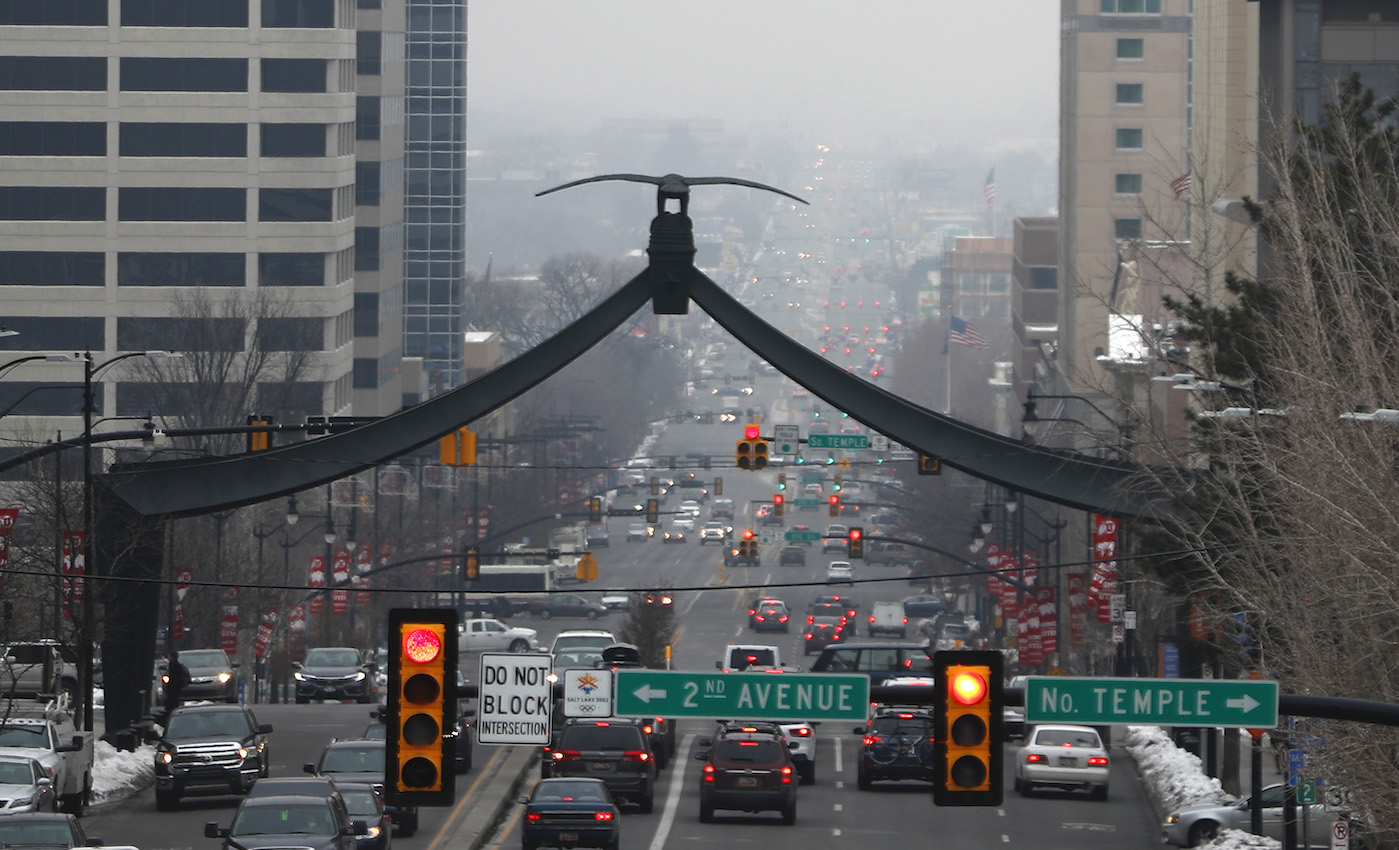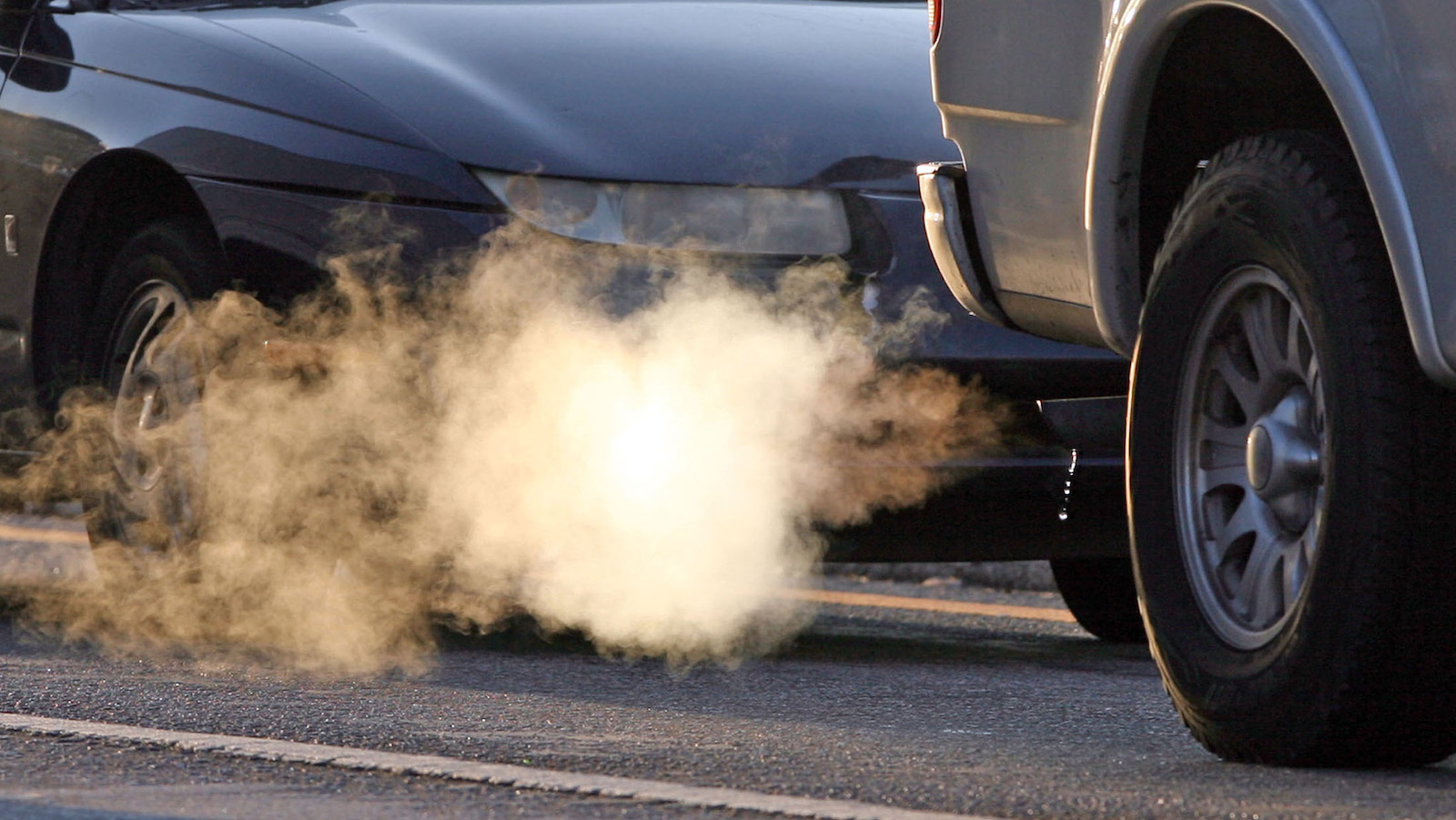The Environmental Protection Agency, or EPA, finalized new greenhouse gas emissions standards for cars and trucks produced through model year 2026 on Monday, a move that will cut carbon emissions and air pollution and lay some of the groundwork for a transition to electric vehicles.
The new standards arrive on the heels of West Virginia Senator Joe Manchin’s announcement over the weekend that he will not support the Build Back Better Act. The Act contains approximately $550 billion in clean energy investments, including tax credits for electric vehicles, but cannot pass without Manchin’s vote. Without it, the EPA greenhouse gas regulations are one of the most important tools Biden has left to cut emissions.
“It feels really good to end the year on a note like this,” said Alice Henderson, director of transportation and clean air policy at the Environmental Defense Fund. “We’re really excited about this rule.”
Transportation is the largest source of emissions in the country, accounting for 29 percent of U.S. greenhouse gas emissions, with passenger cars and trucks emitting about 58 percent of that. The EPA’s clean car standards require automakers to cut their average emissions across their light-duty fleets with each new model year by improving vehicle efficiency and adopting new technologies. To comply they might make lighter vehicles, use smaller engines, or increase production of hybrid and electric vehicles.
In 2012, under President Obama, the EPA significantly strengthened the standards for light-duty cars and trucks through model year 2025, but they were later weakened by the Trump administration. The final standards issued by the EPA on Monday approximate those issued under Obama and surpass them for 2026. The EPA expects that under the new rules, battery electric vehicles and plug-in hybrids will make up 17 percent of U.S. vehicle production in 2026, up from about 2 percent in 2020.
While in the past, the EPA has set greenhouse gas standards in conjunction with fuel economy standards promulgated by the Department of Transportation, the agencies are no longer issuing these rules in sync. Nonetheless, the EPA estimates that the new emissions standards will lead to new vehicles sold in 2026 having an average fuel efficiency of 40 miles per gallon.
The agency says the new standards will prevent 3 billion tons of carbon dioxide from entering the atmosphere over the next 30 years and will reduce gasoline consumption by 360 billion gallons. By reducing the amount of fuel burned, the standards will also lower emissions of other pollutants that harm public health, like microscopic particle pollution and nitrous oxides. The EPA expects the standards to generate $190 billion in benefits for Americans by improving public health, saving drivers money at the pump, and lessening the potential impacts of climate change.

The final standards announced on Monday are stronger than what had initially been proposed by the EPA in August. During the public comment period for the rule, many environmental, public health, and consumer groups as well as state and local governments testified that the proposal did not go far enough and urged the agency to adopt more stringent standards.
Moms’ Clean Air Force, a national network of mothers who fight for better air quality standards applauded the agency for listening. “Moms have been urging EPA to finalize the strongest possible tailpipe pollution standards,” said Molly Rauch, the group’s public health policy director. “That’s good news for the millions of children whose asthma is made worse by car pollution. It’s good for the Black and Latino communities that are disproportionately exposed to tailpipe pollution. It’s good for all people living near highways and around dense traffic—and suffering poor health because of it.”
Groups representing automakers and the United Auto Workers supported the agency’s initial proposal and tried to dissuade it against more stringent standards. One concern they raised was whether stronger standards would rely too heavily on the uptake of electric vehicles as a means of compliance, when there was so much uncertainty around the availability of electric vehicle charging infrastructure and how eager consumers will be to adopt them. However, on Monday, the United Auto Workers called the new rules a “win-win” for workers and the environment and said they were “well thought out.”
John Bozzella, president and CEO of the Alliance for Automotive Innovation, a trade association, said “Achieving the goals of this final rule will undoubtedly require enactment of supportive governmental policies – including consumer incentives, substantial infrastructure growth, fleet requirements, and support for U.S. manufacturing and supply chain development.”
Henderson noted that the final rule issued on Monday does allow some flexibility for automakers that could slow progress at first. Car companies have amassed huge amounts of credits from earlier compliance periods by achieving greater emissions reductions than they were required to, and the new standards extend the life of some of those credits.
“Our analysis shows that automakers could meet the 2023 standard pretty much exclusively by applying the credits that they’ve already banked,” Henderson said. “I think that that’s one thing that we might see in the near term — not a dramatic shift in what’s being sold, but really just a use of those credits”
This is only the first step in the Biden administration’s plans to cut emissions from cars and trucks. In August, Biden issued an executive order directing the EPA to develop standards for 2027 and beyond that will put the U.S. on a path to achieving his goal to make half of all new vehicles sold in 2030 zero-emissions vehicles.
“The uncertainty around the Build Back Better legislation means that strong rulemaking for 2027 and beyond is both more challenging and more critical,” said Jeff Alson, a former senior engineer and policy advisor in the EPA’s Office of Transportation and Air Quality, and a member of a nonprofit network of EPA alumni, in a statement.



